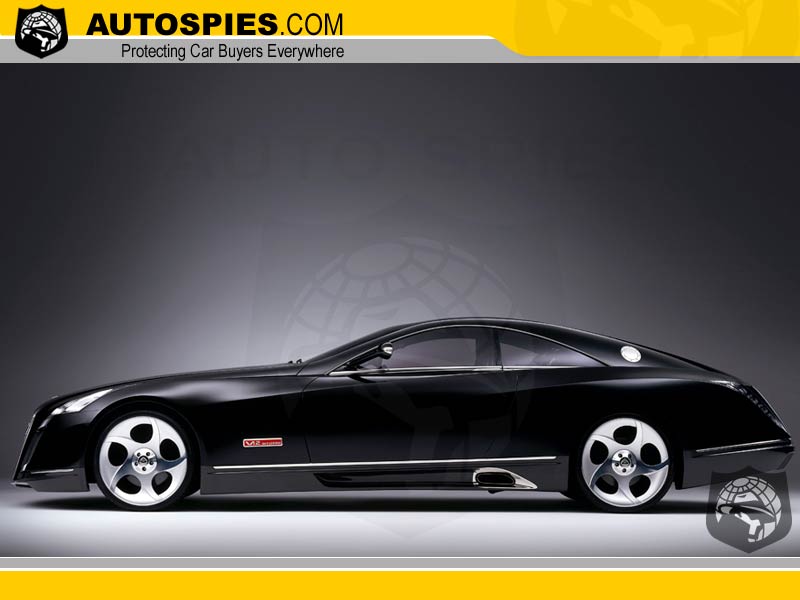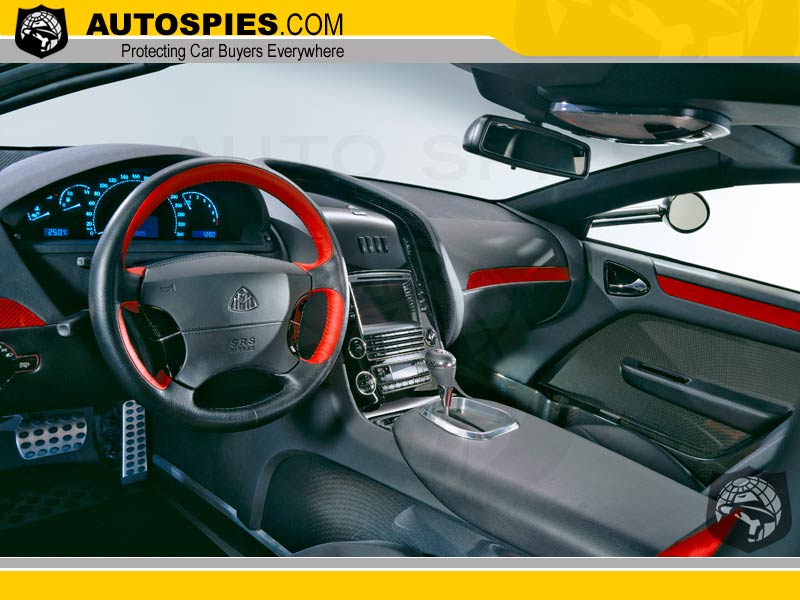
Friday, June 09, 2006
House rejects Net neutrality rules
From Cnet:
The U.S. House of Representatives definitively rejected the concept of Net neutrality on Thursday, dealing a bitter blow to Internet companies like Amazon.com, eBay and Google that had engaged in a last-minute lobbying campaign to support it.
By a 269-152 vote that fell largely along party lines, the House Republican leadership mustered enough votes to reject a Democrat-backed amendment that would have enshrined stiff Net neutrality regulations into federal law and prevented broadband providers from treating some Internet sites differently from others.
Thursday, June 08, 2006
Eric Schmidt goes to Washington. Net Neutrality: Part XI
Eric Schmidt goes to Washington:
The Internet as we know it is facing a serious threat. There's a debate heating up in Washington, DC on something called "net neutrality" – and it's a debate that's so important Google is asking you to get involved. We're asking you to take action to protect Internet freedom.
In the next few days, the House of Representatives is going to vote on a bill that would fundamentally alter the Internet. That bill, and one that may come up for a key vote in the Senate in the next few weeks, would give the big phone and cable companies the power to pick and choose what you will be able to see and do on the Internet.
Today the Internet is an information highway where anybody – no matter how large or small, how traditional or unconventional – has equal access. But the phone and cable monopolies, who control almost all Internet access, want the power to choose who gets access to high-speed lanes and whose content gets seen first and fastest. They want to build a two-tiered system and block the on-ramps for those who can't pay.
Creativity, innovation and a free and open marketplace are all at stake in this fight. Please call your representative (202-224-3121) and let your voice be heard.
Thanks for your time, your concern and your support.
Eric Schmidt
All-American Bad Ass

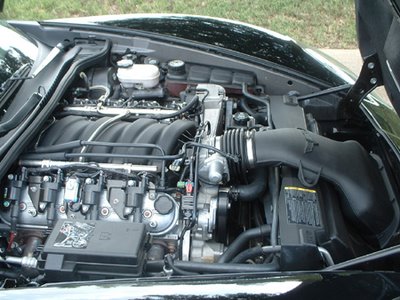
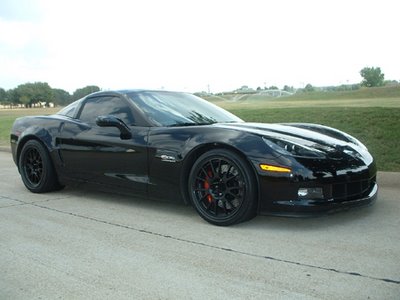
"Bad day at work? Light-up the Z06 LPE from a standstill and the ensuing black hole consumes your job, your family, your name. By 5000 revs, Lingenfelter’s black beauty dusts everything this side of a Ferrari Enzo. By 7000 rpm, the vicious pull starts to suck-up daylight and blur your peripheral vision. Empirically speaking, the Z06 LPE eliminates the quarter mile in 10.6 seconds, ending at a glorious 134mph. What's more, downshifting before a corner is an entirely pointless exercise; the LPE's powerband is larger than the national debt and more usable than throw-beads at Mardi Gras."Model Tested: Chevrolet Corvette Z06 LPE
Curb Weight: 3130 lbs.
Engine: 7.0L LS7 V-8, OHV, 2 Valves per cylinder
Horsepower: 616 hp @ 6500 rpm
Torque: 571 lb-ft @ 5000 rpm
Drive Type: rear-wheel drive
0 to 60: 3.3 secs. (est)
1/4 Mile: 10.6 secs. @ 134 mph
Price as Tested: $87,855
Top Speed: 200+ mph (est)
Towing Capacity: NA
MPG: 16 / 26 est.
On a Wing and a Prayer at Boeing

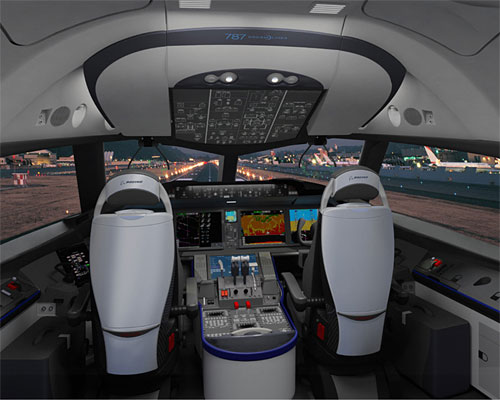 The stakes have never been higher for the company and its Dreamliner, its revolutionary lightweight jetliner
The stakes have never been higher for the company and its Dreamliner, its revolutionary lightweight jetliner BusinessWeek Online 06/07/2006
Author: Stanley Holmes
For Boeing (BA ) the 787 Dreamliner, with its radical new lightweight design, represents far more than a potentially juicy profit stream. The carbon-fiber-reinforced plastic aircraft is supposed to be the symbol of a new Boeing -- a visionary company that has transcended its recent ethical scandals, designed the most innovative commercial plane ever, and devised the most sophisticated manufacturing process in history to produce the aircraft. But as crucial deadlines loom, BusinessWeek has learned that Boeing's engineers are wrestling with several significant technical and production problems that could threaten the scheduled 2008 delivery of the jetliner.
At a time when Boeing has left itself with little margin for error, the wide-ranging series of glitches could create a domino effect if not resolved quickly. The most important piece of bad news -- the fuselage section, the big multi-part cylindrical barrel that encompasses the passenger seating area, has failed in company testing. That's forcing Boeing to make more sections than planned, and to reexamine quality and safety concerns.
Elsewhere in the aircraft, suppliers are struggling to meet Boeing's exacting technological standards and ambitious production deadlines. The first two nose sections, for instance, were deemed unacceptable by Boeing. Software programs designed by a variety of manufacturers are having trouble talking to one another. And the overall weight of the airplane is still too high-- especially the single biggest part of the 787, the carbon-fiber wing.
BIG PAYOFF. A light, strong plane is the big payoff for the huge technical risk Boeing is taking in crafting parts out of composites. Small wonder that as the entire Boeing team prepares to build the first airplane, tensions among engineers have erupted into shouting matches, say people familiar with the matter.
Technical glitches, missed deadlines, and stretched nerves are par for the course with new planes. But far more than a new plane is at stake. Boeing has undertaken a grand business experiment with the Dreamliner. In a bid to tap the best talent and hold down costs, the aerospace icon has engaged in extreme outsourcing, leaving it highly dependent on a far-flung supply chain that includes 43 "top-tier" suppliers in 12 countries. It is the first time Boeing has ever outsourced the most critical areas of the plane, the wing and the fuselage. About 80% of the Dreamliner is being fabricated by outside suppliers, vs. 51% for existing Boeing planes.
The Dreamliner's mounting challenges call into question whether such a radical business model can succeed, and whether the advantages of collaboration on such a scale are outweighed by the loss of logistical control. For Boeing in particular, it raises the question of whether the company is entering a danger zone that could result in a serious blow to its credibility. In the years since Boeing's epic production disaster in the late 1990s, the company has regained much of its reputation and the ground it had lost to European rival Airbus. The Dreamliner has been central to that remarkable revival, racking up a record 350 firm orders in two years. That has forced Airbus to go on the defensive and rethink its midsize plane strategy.
FINANCIAL RISKS. There could also be large financial penalties for Boeing if problems result in big delays. With demand hot, the manufacturer is mulling whether to raise production rates after 2010 from 7 to 10 airplanes a month, and possibly higher. Glitches in the new fuselage-making process could put that decision on hold, squeezing the potential peak revenue and operating profit. Boeing typically receives the major portion of its revenue when it delivers a finished airplane.
In an interview with BusinessWeek, Boeing 787 Vice-President Michael Bair acknowledged the various problems. But he insists that the Dreamliner will enter service in 2008 as planned. "Yes, the last barrel failed," Bair says. "We knew it could happen. Did we wish it would happen? No." Bair adds that "everybody is struggling a bit and struggling to various degrees." He remains optimistic, if guardedly so, about meeting the 2008 deadline. "Right now, everything looks O.K. in terms of meeting our entry into service dates for the 787," Bair told reporters in a May 22 conference call. "But as you all know, new airplanes are really hard to do."
The last time Boeing staked its reputation on its production prowess, during the 1997-98 boom cycle, its factories tried to build too many planes too quickly and wound up having to make a disastrous shutdown of the assembly lines. The fallout cost Boeing $2.5 billion in delivery penalties and cost overruns, and nearly destroyed its reputation as the world's leading developer of commercial jets. Many believe the fierce internal rivalries between Boeing units at the time created a focus on getting results at any cost, and led to the very public unraveling of the company in a long series of ethics scandals.
WALLPAPER PROJECT. The first big sign of struggle with the 787 surfaced three weeks ago at Boeing's Developmental Center in south Seattle. That's when engineers discovered that worrisome bubbles were developing in the skin of the fuselage during the process of baking the plastic composite tape in big oven-like machines.
Think of the operation as a massive wallpapering exercise. The "paper" is wide tape that's loosely woven from superstrong carbon fibers, then soaked in a honey-thick mixture of polymers. The gooey tapes are plastered on the inside of molds, and then cooked. The heat triggers a chemical reaction that turns the polymers into a hard, super-sturdy structure. The advantages of a carbon-fiber fuselage are enormous in saving weight, reducing costly inspection checks, and simplifying assembly of the plane.
But the main challenge is the sheer size of the fuselage sections. These require multiple layers of carbon-fiber tape to assure structural integrity. However, each added layer increases the likelihood of variations or flaws, say composite experts, such as bubbles on the skin. Bubbles could weaken the material and eventually cause cracks by allowing water to seep under the surface, then freeze up and expand at high altitudes, raising the possibility that the fuselage could crack under extreme conditions. Bair says Boeing has located the source of the problem.
Other trouble spots have been the efforts at electronic integration. The Dreamliner will rely on electric power, rather than a more mechanical process, to signal the controls from the flight deck to the rest of the plane, thus reducing weight and complexity. But Boeing issued key protocols late to suppliers. That, combined with the fact that the software systems are not integrating smoothly, has delayed the integration effort.
What's more, suppliers such as Smiths, Honeywell (HON ), and Rockwell (COL) are fierce competitors that have been corralled into being teammates on the 787 program. As each vendor struggled to get its software to talk to the others, competitive juices boiled, and partners turned into the hardened competitors they usually are. "I'm used to knowing who my enemy is every step of the way," says one supplier familiar with the matter. "But now I'm working with the enemy."
Bair acknowledges the communications problems -- and admits that nobody inside of Boeing thought building the 787 would be easy. After all, the company decided to bet on pushing the boundaries of the possible. "If everything was going perfect," he says, "it [would mean] you weren't trying hard enough.
Wednesday, June 07, 2006
British Ultima sets new 0-100mph-0 world record


 For the third year in a row an Ultima GTR supercar has set a new world record for a standing start to 100 mph and back to a stop. The Director of Ultima Sports, Richard Marlow, set a new record time of just 9.4 seconds, in the process setting new world records for 0-60 mph (2.6 seconds), 0-100 mph (5.3 seconds) and for braking from 100 mph to zero (in a neck-stretching 3.6 seconds). This year's Ultima GTR record holder was upgraded with a 720 hp Chevrolet V8, and is now known as (what else?) the Ultima GTR720. The record setter was fully road legal, equipped with street tires, and outfitted with a standard G50 transmission. Amazingly, the record car has neither traction control nor ABS.
For the third year in a row an Ultima GTR supercar has set a new world record for a standing start to 100 mph and back to a stop. The Director of Ultima Sports, Richard Marlow, set a new record time of just 9.4 seconds, in the process setting new world records for 0-60 mph (2.6 seconds), 0-100 mph (5.3 seconds) and for braking from 100 mph to zero (in a neck-stretching 3.6 seconds). This year's Ultima GTR record holder was upgraded with a 720 hp Chevrolet V8, and is now known as (what else?) the Ultima GTR720. The record setter was fully road legal, equipped with street tires, and outfitted with a standard G50 transmission. Amazingly, the record car has neither traction control nor ABS.The ultralight Ultima GTR720 is a full two seconds quicker from 0-100-0 than the legendary McLaren F1 LM, and over 1.5 seconds quicker than a Ferrari Enzo.
The Ultima is sold in the U.S. as a kit car (see photo!)
Marlow's supercar is his daily driver and a company demonstrator, and was driven to and from the world record test site! A video of the record run is here.
End lag in games?
 LAGMETER - MEASURE AND UNDERSTAND LAG IN YOUR ONLINE GAMES
LAGMETER - MEASURE AND UNDERSTAND LAG IN YOUR ONLINE GAMES Here it is, a powerful software application that finally gives you the ability to not only measure the Lag you live with in your games, but also to understand where your lag-related problems are coming from. Finally, the causes of your Lag will not be a mystery because LagMeter will tell you if it is your gaming PC, the network, or the gaming server that is giving you grief. Once the causes of Lag are better understood, the gamers, game developers, and hardware manufacturers can work together to provide solutions to our #1 problem.
This technology, developed by Bigfoot Networks, is a great step for us to be able to fight lag. First we have to be able to measure and understand it, and then we can kick its ass. “Hardcore gamers know that Lag can be caused by many different forces, and that Lag has no formal definition – its a term that gamers use to describe something bad that happens in an online game that is out of their control” said Harlan Beverly, CEO of Bigfoot Networks. “With LagMeter, gamers can quantify and narrow down what is causing Lag in their favorite games.”
Harlan Beverly said the toughest challenge about developing LagMeter was to quantify Lag in a meaningful metric that made sense. “LagMeter solves this by introducing a new metric, Lags per Minute (LPM), which is essentially the number of measurable Lag events in a minutes worth of game-play.” For a formal definition of Lags Per Minute, click here. In addition to displaying Lags per Minute, LagMeter also measures and displays our tried and true favorite metrics – Ping and Frames Per Second (FPS). It even has an advanced configuration tab that allows the user to tailor exactly what is being measured based on which game they are playing or which network port or device is running the game.
Monday, June 05, 2006
Blockbusted! Movie rentals of today—and tomorrow
Those crazy cats at Arstechnica took a look at all the mediums for getting movies. Hilarity ensues:
Final thoughts
What we have today is a hierarchy of services that are good at different things, but none that will do everything and wash your dishes. Retail stores that happen to sell videos can be good for stressed-out soccer moms and dads who just want to pick up a movie while buying underwear and groceries. Video stores can serve video game freaks better than movie buffs, but I suppose there's some value in the store browsing experience, and the ability to drop by and pick up a quick hit anytime counts for something too. Call it a second-best quickie solution.
The rental-by-mail services, whichever one you prefer, play an entirely different role. If you just like movies, want a steady supply, but don't really choose movies on the spur of the moment, they can serve you well. It's the widest selection of titles available anywhere today, and you can just set your queue and forget it until it runs dry.
Download services have potential, and if you're HTPC-equipped already, this might just be your ticket to entertainment nirvana. If you're not, forget about it for another couple of years, then check back to see if DRM terms have been relaxed or office-to-livingroom PC-to-TV streaming gadgets have become mainstream. But even then, the catalogs our darling download services are offering up now don't hold a candle even to the anemic video stores. A major Hollywood clue-bat smacking is in order so that the digitizing and reasonable licensing of all that sweet content can happen.
The same caveat goes for VOD: there's just not enough content out there. But it's somewhat forgivable in this case, as the business model and technology behind VOD are still being hammered out and taking shape. It really is the ultimate in convenience, and there's certainly a bright future here. If I had to choose between VOD or Vongo making it to the big time, I'd pick on-demand services every time. The download services could emulate the cable company's on demand, of course, by tying their own services to set top boxes.
But we're way out of Video Business 101 now, and it's up to the movie industry to lead the charge into an on-demand future. They had better—they are the ones that stand to lose the most if change isn't forthcoming.
NVIDIA's GeForce 7950 GX2 graphics card
 Techreport Conclusions
Techreport ConclusionsSomehow, I didn't really expect a "single" GeForce 7950 GX2 card to be a compelling product outside of a Quad SLI configuration. This puppy does have its warts, including the need for mobo BIOS updates and the SLI-like limitations for multi-monitor use that may turn some power users away. Still, the GX2 is remarkably tame overall. This card takes up no more space, draws no more power, and generates no more heat or noise than a Radeon X1900 XTX, but its performance is in another class altogether. The multi-GPU mojo generally happens transparently, too, thanks to a healthy collection of SLI profiles already established in NVIDIA's drivers. Putting two GPUs on a card has allowed NVIDIA to overcome the limitations of its present GPU designs and of current fab process tech to achieve new performance heights in a single PCI Express slot.
Of course, such things have been possible for quite some time in the form of a two-slot SLI or CrossFire solution, but the GX2 still has much to recommend it. Doubling up on GeForce 7900 GTs would get you an SLI setup in the same price range, but with lower (stock) GPU clock speeds and only 256MB of memory per GPU. And the GX2 works in any chipset, which may prove to be a real boon if you fancy one of Intel's Conroe processors, an Intel chipset, and uber-fast graphics. I could see that combination becoming very popular this summer, if things shake out as expected.
All that's left now is for NVIDIA to enable—and support—Quad SLI in consumer-built systems. Let's hope NVIDIA comes to its senses on that one sooner rather than later.
Tomshardware
Nvidia is releasing a graphics card package where two G71 GPUs are already sandwiched together in a single package: its new, top-of-the-line GeForce 7950 GX2.
To call this a single "card" may be a bit of a stretch: Indeed, it only plugs into one PCI Express slot, but physically, the 7950 GX2 is still two cards mounted together, so it still consumes two cards' worth of volume inside the PC chassis. Still, think of it as an SLI option that's already configured for you - that's essentially as easy to install as a single card.
In some regards, it's like having two G71s (7900 GTX), but Nvidia has had to do some tweaking in order for both to work together within this form factor. Nevertheless, you're getting the benefits of 1 GB of GDDR3 memory (512 MB per GPU), plus a total of 48 pixel pipes and 16 vertex shaders, again divided among the two GPUs. But core clock speed is reduced a bit, from the 7900's 650 MHz to 500 MHz, with memory clock speed at 600 MHz. Yet the presence of two processors manages to boost total memory bandwidth from the 7900's 51.2 GB/sec to a formidable 78.6 GB/sec.
Nvidia warns this morning that the 7950 "will not be faster than two GeForce 7900 GTX-based graphics cards in an SLI configuration, because the clock speeds on the GeForce 7950 GPU are lower than the GeForce 7900 GTX." The company has not stated whether this is due to space and cooling constraints, or the need to maintain the viability of the dual-7900 option. But it is promising the paired card will be able to drive a new generation of widescreen, flat-panel displays at 2560 x 1600 resolution, using "dual dual link DVI" (two dual-link sockets), effectively pumping out the content of four DVI channels simultaneously.
UPDATE: In Darren Polkowski's latest round of tests for Tom's Hardware Guide, he concluded the 7950 GX2 is a solid performer, that he feels is "worth the $650 that one would have to shell out for extreme graphics capability." The minimum 53% boost in memory bandwidth is quite welcome, but Darren's also pleased with the card's reasonable use of space, without capacitors sticking out and bumping into things, while leaving enough room in the substrate sandwich to leave the #2 card in the pair reasonably cool.
Also, as TG Daily discovered this afternoon, the first GX2 cards to hit the streets are selling for just under $600, with higher-clocked models selling for as high as $775.
If you're already pairing two or more 7950 GX2s together in your mind, be advised, Nvidia isn't making this dream a reality for consumers just yet. For you to pair GX2s in a quad-SLI setting, you need to have an nForce 4 SLI or nForce 590/570 SLI motherboard, plus a little logo saying you're an authorized Nvidia system builder.
The new card-and-a-half also marks the debut of Nvidia's ForceWare Release 90 driver, which now features an optional control panel that the company describes as "Vista-inspired," with more descriptive icons for the novice user.
The idea of packing two graphics processors isn't new. Ignoring Nvidia's reference design, Gigabyte unveiled its dual GPU design based on 6600 GT processors in February of last year, followed by a version that used regular 6600 processors in March and 6800 GT variant that arrived in May of last year.
Sunday, June 04, 2006
Video explains the world's most important 6-sec drum loop
This fascinating, brilliant 20-minute video narrates the history of the "Amen Break," a six-second drum sample from the b-side of a chart-topping single from 1969. This sample was used extensively in early hiphop and sample-based music, and became the basis for drum-and-bass and jungle music -- a six-second clip that spawned several entire subcultures. Nate Harrison's 2004 video is a meditation on the ownership of culture, the nature of art and creativity, and the history of a remarkable music clip.
